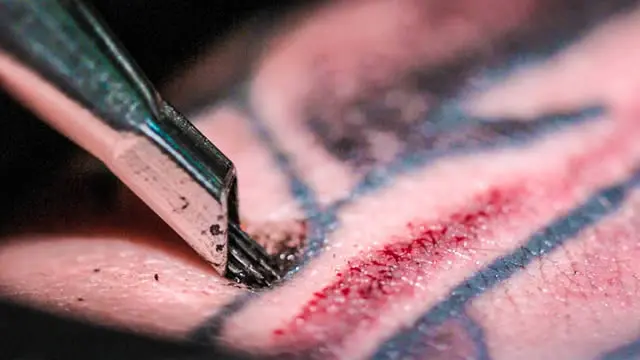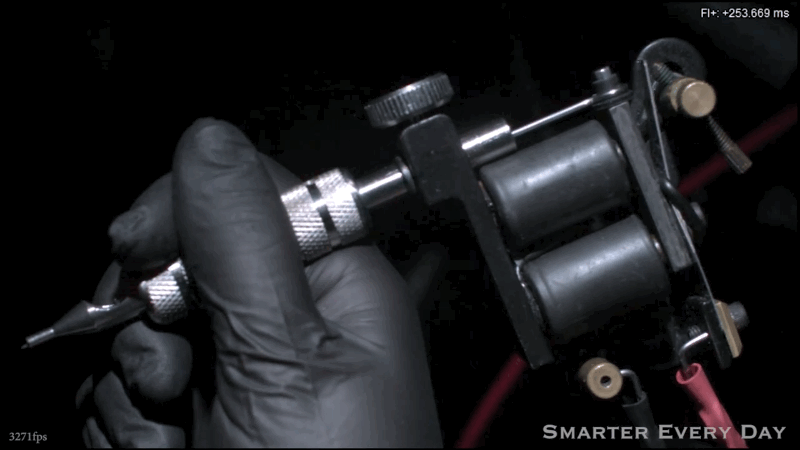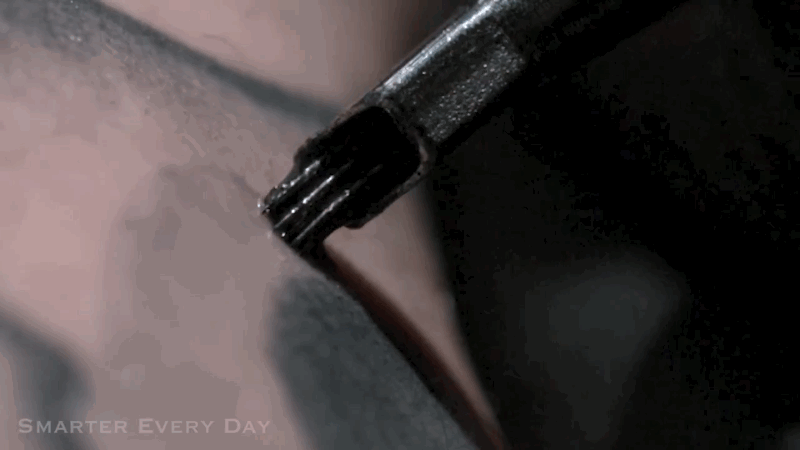After finished and healed, tattoos can look amazing, depending on the talent of the tattoo artist, of course. But, so far, the truth is that the inkjet process (because that’s precisely what a tattoo is all about) involves blood and piercings.

In other words, it can be very painful. To show what this process looks like, Destin Sandlin, the host of the show Smarter EveryDay, went to a tattoo parlor and revealed, zoomed in and in slow motion, the science behind a tattoo.
If you don’t speak English and want to get straight to the action, head to minute 3 of the video.
The first part of the video is dedicated to the tattoo machine, an electrical device similar to a dentist’s drill (both in noise and appearance). The machine was invented by Samuel O’Reilly in the late 19th century and has remained basically the same ever since. O’Reilly adapted Thomas Edison’s printer for the skin, modifying the tube system and the magnetic oscillatory part to move the needle.

Tattooing can be done with one or more needles, which pierce the skin between 50 and 3,000 times per minute. The needles move through a circuit that connects electromagnetic coils to a foot pedal similar to that of a sewing machine. This electromagnetic field pushes the needle back and forth like this:

What causes the ink to stay on the skin is that the needle with ink penetrates to the epidermis – the superficial part of the skin – and deposits the ink into the dermis, the layer below the epidermis, which contains blood vessels and nerves.
Each needle sting is a wound, to which the body responds by triggering an inflammatory process. That translates into the body sending immune system cells to the wound site, these special cells known as macrophages will “eat” the paint in an attempt to clean up the inflammation caused by it. What’s left over ends up being absorbed by cells called fibroblasts, which stay in the dermis forever.
Here’s another slow-motion video, this one is much less traumatizing.



Comments